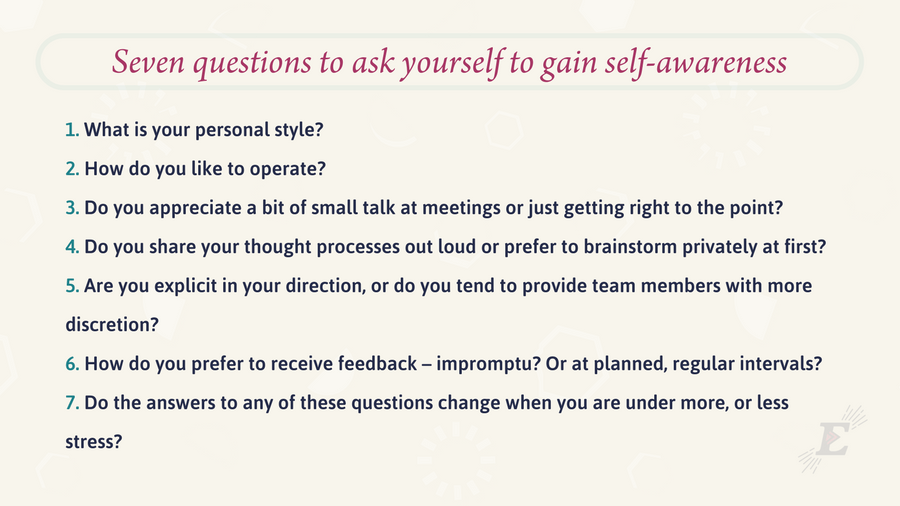Leading a Productive Team: Flexing Your Approach to Meet Them Where They Are
It isn’t new news that our workforce is becoming increasingly diverse: 47% of employees are women, 36% are multicultural, and by the year 2025, three out of every four workers around the world will belong to the Millennial Generation! With this diversity undoubtedly comes a range of perspectives, influences, and values – all of which a leader must leverage in order to maximize success on a team. So how can this be achieved?
We’ve mapped out three simple steps to help guide you through the process:
-
- Gaining self-awareness
- Understanding others
- Flexing your style to meet your team’s
#1 Gaining self-awareness
First, leaders need to understand themselves. What is your personal style? How do you like to operate? Do you appreciate a bit of small talk at meetings or just getting right to the point? Do you share your thought processes out loud or prefer to brainstorm privately at first? Are you explicit in your direction, or do you tend to provide team members with more discretion? How do you prefer to receive feedback – impromptu? Or at planned, regular intervals? Do the answers to any of these questions change when you are under more, or less stress?
As a leader, it is SO important to understand what makes you you – only then can you truly appreciate the value that your style brings to the team.
And as you might have guessed, you can’t understand the value your team members bring either, unless you get to know them as individuals as well!
 #2 Understanding others
#2 Understanding others
Here’s where showing up as your true self and nurturing your relationships comes into play (for more on this, see our earlier post on building connection). If you want your team to be totally honest with you, to tell you what really makes them tick, what their preferences, pet peeves, and so on are – be authentic. Show that you’re genuinely interested in learning more about them. Meet one-on-one and ask similar questions as you did yourself, and take notes.
Here’s a template you can use the next time you meet or check-in with your employees:
You can even have them take a short self-assessment. Our online program, Leadership Roadmap to Success offers three awesome tools that can help anyone understand their natural style preferences, key talents and contributions, and how they can better manage relationships. We even work with you to build a plan to maximize your productivity and build positive working relationships!
#3 Meet them where they are
Now that you have clearer picture of your team’s preferences (and your own!) it’s time to figure out how to make them gel. How does your style differ from theirs? In what ways can you make adjustments to get the best out of your team? The ultimate goal is to create a space where everyone feels they can play to their strengths, where they aren’t held back, and where they feel empowered.
Here are a couple examples of what this might look like in practice:
Check in. If you tend to give people free reign on projects but one of your teammates has expressed a preference for more direction, make it a point to check in with them more often than you’re accustomed to. Let them know you’re available and welcome their questions. This connection point ultimately creates a better end product and a more positive relationship.
Be conscious. If you’re naturally extraverted and draw energy from being around crowds, be mindful of those who aren’t. Try not to make team members feel obligated to attend after work happy hours and arrange for other types of team building opportunities that don’t require large groups of people. Think lower key, outdoor activities – maybe a hike, a ride on horseback, a peaceful picnic by the lake, or even an offsite opportunity to work through a project together.
Flexing your style will take some effort at the beginning. It requires you to set an intention, remain conscious of your behaviors, and sensitive to how they impact those on your team. Eventually though, it’ll become second nature! That said, it isn’t totally unreasonable for you to ask your team to meet you in the middle, at least at times when you feel appropriate. You don’t want to be bending over backwards to adjust to their preferences, but flexing just enough to strike a balance between yours and theirs. Ask for feedback along the way so you can better understand the impact you are having on them and adjust to meet their needs to ensure they can reach optimal performance.





